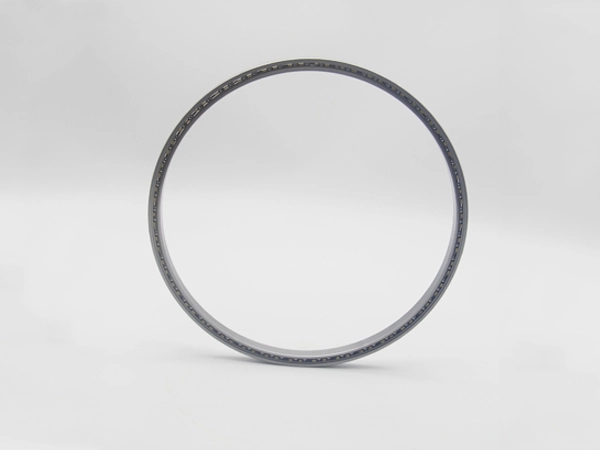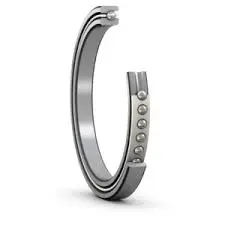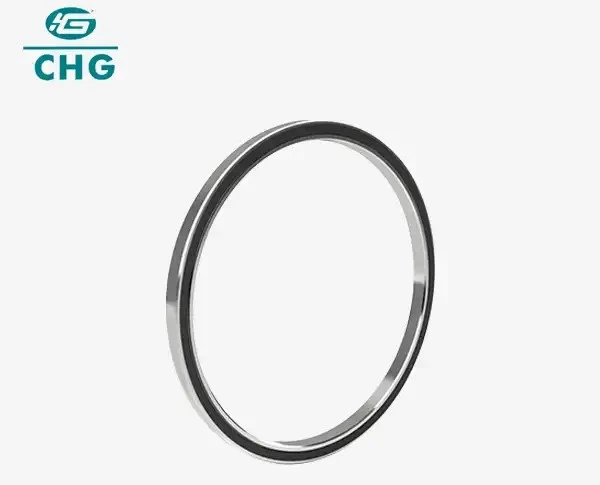How Type C Thin Section Bearings Can Optimize Your Equipment’s Reliability and Durability
Are you looking to enhance your equipment's performance while reducing its footprint? Type C thin section bearings might be the solution you've been searching for. These innovative components are revolutionizing how engineers approach equipment design and reliability optimization, offering unprecedented opportunities for equipment advancement across various industries.
What Makes Type C Thin Section Bearings Different from Standard Bearings?

The fundamental distinction of Type C thin section bearings lies in their revolutionary design philosophy that sets them apart from conventional bearing solutions. These bearings represent a significant advancement in bearing technology, featuring a unique design architecture where the cross-section maintains consistency regardless of bore diameter – a characteristic that fundamentally transforms their application potential. The engineering precision involved in their manufacture ensures optimal performance through meticulously calculated raceway geometry and ball complement configurations. Unlike standard bearings, which often require substantial space allocation and contribute significant weight to equipment designs, Type C thin section bearings achieve exceptional performance through their innovative use of a larger number of smaller diameter balls, creating superior load distribution patterns while simultaneously reducing friction coefficients to unprecedented levels. This sophisticated engineering approach results in a bearing solution that not only occupies minimal space but also delivers enhanced operational characteristics that can significantly improve overall equipment performance.

At Luoyang Huigong Bearing Technology Co., Ltd., we understand the critical nature of bearing selection. Our experienced R&D team provides technical guidance, and we offer customized solutions for different working conditions, backed by 30 years of industry experience and partnerships with major enterprises. With advanced production equipment and testing instruments, our company holds over 50 invention patents and has obtained ISO9001 quality management system and ISO14001 environmental management system certifications. As a 2024 quality benchmark enterprise, we invite you to learn more about our products by contacting us at sale@chg-bearing.com or calling our hotline at +86-0379-65793878.
How Do Type C Thin Section Bearings Enhance Equipment Performance?
The performance enhancement capabilities of Type C thin section bearings represent a quantum leap in bearing technology, combining multiple advantages that significantly impact equipment functionality and reliability. These bearings deliver exceptional space and weight optimization through their innovative design, featuring cross-sections ranging from 0.1875 × 0.1875 inch to 1.000 × 1.000 inch and bore diameters spanning from 1 inch to 40 inch. This remarkable range of dimensions enables engineers to achieve substantial weight reductions compared to standard bearings while maintaining or even improving performance characteristics. The compact design philosophy not only enables a smaller equipment footprint but also contributes to enhanced operational efficiency through reduced inertial loads and improved dynamic response characteristics. The optimization of ball complement configuration and raceway geometry results in superior running accuracy and significantly reduced friction, leading to lower energy consumption and extended service life. These bearings achieve improved stiffness through their unique design, enabling better load handling capabilities while operating with lower torque requirements – a combination that was previously difficult to achieve with conventional bearing designs.
The design flexibility inherent in Type C thin section bearings opens up new possibilities for equipment optimization and innovation. The consistent cross-section across different bore sizes simplifies the integration process into existing equipment designs while reducing material requirements in surrounding structures. This standardization leads to more cost-effective manufacturing solutions and streamlined maintenance procedures. The bearings' ability to maintain high precision and smooth operation under various loading conditions makes them particularly valuable in applications requiring exact positioning and consistent performance. The reduced weight and space requirements often allow engineers to create more compact and efficient equipment designs, leading to cascading benefits throughout the entire system, including reduced material costs, lower shipping expenses, and improved energy efficiency during operation.
What Industries Benefit Most from Type C Thin Section Bearings?
The applications of Type C thin section bearings span a diverse range of industries, each benefiting from their unique characteristics in different ways. In the aerospace and defense sector, these bearings have become indispensable components in critical systems such as guidance mechanisms, radar support structures, satellite communication equipment, and aircraft control surfaces. The combination of high precision, low weight, and reliable performance makes them ideal for these demanding applications where failure is not an option. The aerospace industry particularly values their ability to maintain accuracy under varying temperature conditions and high-speed operation, while their compact design helps meet the strict space and weight constraints inherent in aircraft and spacecraft design. The defense sector relies on their precision and durability for various applications, from missile guidance systems to advanced radar installations, where maintaining absolute accuracy and reliability is paramount to successful operation.
In the realm of industrial automation, Type C thin section bearings have revolutionized the design and functionality of robotic systems, precision manufacturing equipment, and high-speed assembly lines. Their superior running accuracy and low friction characteristics enable the development of more precise and energy-efficient automated systems. The bearings' ability to maintain consistent performance under continuous operation makes them ideal for applications requiring high repeatability and precision. In quality control systems, their precision helps ensure accurate measurements and consistent product quality. The medical equipment industry has also embraced these bearings for their exceptional performance in critical applications such as diagnostic imaging machines, surgical robots, and patient positioning systems. The bearings' smooth operation and precise movement capabilities are essential for achieving the high level of accuracy required in medical procedures and diagnostics.

The implementation considerations for Type C thin section bearings encompass various crucial factors that must be carefully evaluated for optimal performance. Environmental considerations include operating temperature ranges, exposure to contaminants, and humidity conditions, all of which influence the selection of appropriate sealing solutions and lubrication systems. Loading conditions must be meticulously analyzed, including static and dynamic load requirements, impact and vibration factors, speed requirements, and moment loading calculations. These considerations are essential for ensuring long-term reliability and optimal performance. Maintenance requirements must be carefully planned, including the development of comprehensive lubrication schedules, implementation of condition monitoring systems, establishment of regular inspection protocols, and preparation for predictive maintenance strategies. The integration of these bearings requires careful attention to design optimization, including proper shaft and housing fits, appropriate preload calculations, and consideration of mounting and alignment requirements.
The future of Type C thin section bearings continues to evolve with technological advancements in materials science and smart technology integration. Development in advanced materials, including ceramic hybrid options, special steel alloys, and enhanced surface treatments, promises to further improve bearing performance and durability. The integration of smart features such as embedded sensors, real-time monitoring capabilities, and predictive maintenance algorithms represents the next frontier in bearing technology, enabling proactive maintenance strategies and optimized performance through data-driven decision-making.
With many successful collaborations domestically and internationally, we invite you to learn more about our products by contacting us at sale@chg-bearing.com or calling our hotline at +86-0379-65793878.
References:
1. Journal of Tribology (2023). "Advanced Bearing Technologies in Modern Equipment Design"
2. Mechanical Engineering International (2024). "Thin Section Bearings: Performance Analysis and Applications"
3. Industrial Equipment Quarterly (2023). "Innovation in Bearing Design: Impact on Equipment Reliability"
4. American Society of Mechanical Engineers (2024). "Standards for Precision Bearing Applications"
5. Journal of Aerospace Engineering (2023). "Critical Components in Aerospace Applications: Bearing Technologies"

